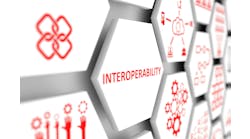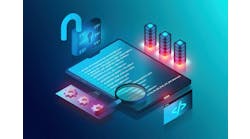Jim Montague is the executive editor for Control. Email him at [email protected].
Many people and organizations become what their times demand, and machine builders are no exception. So when biotechnologies and biopharmaceuticals began to boom in the 1990s, they needed machines and equipment to run increasing numbers of experiments. That's a lot of test tubes and sample wells to fill.
One of the machine builders that showed up to help was AB Controls of Irvine, Calif., which provides automation, robotics and other services to customers in the pharmaceutical, R&D, medical device, aerospace and other fields. Its two primary types of automation include multi-axis robot integrations, mainly used in laboratory automation, and functional automated testing equipment. Established in 1997, AB Controls began assisting biotech clients that typically required high-throughput screening or needed to run and secure results for numerous parallel tests.
"Our users need to run thousands of experiments to find the most effective solution or treatment, but that many experiments can only be done with robots," says Mike Nariman, AB Controls' president and founder. "For example, our control system and software allowed Carl Creative systems to design instruments that employed multiple heads—some machines had up to six dispense heads—for ever-increasing levels of parallel processing to interact with 96- and 384-well plates. This increased throughput tremendously."
Consequently, AB Controls also came up with a software-based solution for performing multiple operations or running several robotic stations at the same time, such as controlling Carl Creative's four-axis gantry robot and four dispensing heads, running interface software and operating its scripting tool. Nariman reports that, before 2001, AB Controls was only involved in writing software and architecting control systems. After 2001, it got involved with building robotic and automated platforms as well.
AB Controls' Tix is a robotic titration work cell that performs automated, precision walk-away testing of up to 105 samples. It performs Karl Fischer titration using a Mettler-Toledo titrator and balance, two pumps and a five-axis robot arm.
"We're different than a machine builder that outsources its software and may add a hodgepodge of it to their equipment," Nariman explains. "Our emphasis is on systems and integration, so we develop our own source code. We've built software platforms that have evolved over time, and new functionalities are added every day. All our machines start from a 3D model, and we keep track of all versions of mechanical as well as electrical and software designs and code. The flexibility in our software tools lets us connect better with end users because their engineers know we'll be able to come up with the right custom machine or solution for them. We're not a machine shop. We use trusted partners for those services. Instead, we try to keep tight control over design and make sure all parts are made with utmost care and precision. All machined parts and off-the-shelf items are assembled and wired in our facility, and tested thoroughly prior to customer buy off and validation. This allows us to focus on the most important aspect of our work which is design."
AB Controls concentrates on multiple programming environments and languages, including National Instruments' LabVIEW, Microsoft .NET for visual basic (VB) and C#, and traditional ladder logic. It also handles specialty languages and environments for motion control and vision devices to help create unique and seamlessly integrated mechanical and electronic solutions. The company's custom automation and robotic systems also employ its proprietary Focus software.
"Our philosophy is that simple is better, but software is really king and is at the center of all we do," Nariman says. "A good automation solution always benefits from good software. We also don't believe in one size fits all. While we try to keep similarity between systems, we do not box ourselves into just one type of controls for all solutions. Mostly, we use Mitsubishi PLCs, Animatics smart motors from Moog with integrated controls/drives, and vision systems and vision-guided multi-axis robots. Sometimes several control systems are integrated into one solution."
Nariman reports that one of AB Controls' more-recent breakthroughs came in 2005 when it integrated a six-axis Mitsubishi robot into a titration station to assist a lyophilization process—a type of freeze drying for pharmaceuticals. "One of their engineers called and said they had an old robot with archaic controls that was prone to breakdowns, and they wanted a new robotic system that they could load up, walk away from and come back the next day to get finished products and analysis," Nariman says.
"The old machine wasn't very reliable because it used a potentiometer for feedback of motion axes, which made it prone to abrupt changes. We integrated a six-axis robot with absolute encoders and integrated the analytical instruments into one solution using our Focus software. In the end, we developed a robotic machine that took up one-fourth of the old machine's floor space and was 10 times more reliable and a lot less costly."
Nariman adds AB Controls' innovations in integrating analytical instruments and robots into one machine with uniform software are what enable its machines to be better coordinated and easier to maintain. For instance, one of its latest systems is the Tix robotic titration work cell that performs automated, precision, walk-away testing of up to 105 samples. It performs Karl Fischer titration using a Mettler-Toledo titrator and balance, two pumps and a five-axis, articulated robot arm.
AB Controls also has used its robotic and automation skills to develop functional testing systems for evaluating implant components, and it's getting into compound-management systems. Similar to high-throughput screening, compound management involves upstream processes that chemists use to make sure precise amounts of substances are dissolved in precise amounts of solutions, so their experiments and formulations will be accurate.
"Software is what allows us to transfer our robotics and automation skills," Nariman says. "If a function needs to happen, it may be occurring in different disciplines, but it's still the software that drives it."





